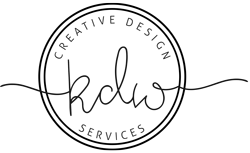Design Thinking: A Human-Centric Approach to Innovation and Problem-Solving
In an age defined by rapid technological advances and ever-evolving user preferences, the need for adaptive, innovative, and user-centric solutions has never been more pressing. Amidst this backdrop, a methodology has risen to prominence—one that diverges from traditional problem-solving methods and places the user’s needs at its very epicentre: Design Thinking.
Table of Contents
Unravelling the Essence of Design Thinking
Far removed from the confines of mere aesthetics or the superficiality of design as we conventionally understand it, design thinking emerges as a robust approach to tackling challenges. It’s not just another method to arrive at solutions. Instead, it’s an empathetic journey, drawing deeply from understanding human experiences and desires, aiming to carve out solutions that fit seamlessly into the tapestry of real users’ lives.
Let’s take a moment to draw parallels between traditional problem-solving and this avant-garde methodology.
Drawing the Line – Traditional Problem Solving vs. Design Thinking
| Aspect | Traditional Problem Solving | Design Thinking |
|---|---|---|
| Focus | Solutions-oriented | User-oriented |
| Approach | Linear | Iterative |
| Key Factor | Analytical Thinking | Empathy |
While traditional methodologies often work in a straight line, moving from problem to solution, design thinking dances in loops, always circling back, refining, and pivoting as it hones in on the user’s real needs.
Embracing the User: The Ascendancy of Human-Centered Design
As our world weaves an intricate web of interconnections, with complexity threading through every layer, there emerges a clarion call: to truly understand and cater to the variegated challenges and aspirations of a diverse populace. This is where human-centered design, the beating heart of design thinking, stakes its claim. This approach is not about devising solutions in secluded ivory towers. It’s about descending to the ground, listening to the heartbeat of the users, and sculpting solutions that echo their dreams, aspirations, and needs.
The Ubiquitous Footprint of Design Thinking in the Contemporary World
Today, design thinking is not the preserve of a select few. It has cascaded from the lofty realms of tech behemoths to the gritty realities of grassroots organizations, each leveraging its tenets to drive unparalleled innovation and resonate deeply with their audience. Be it the iconic user-centric designs from Apple, the transformative community-health solutions championed by IDEO, or UNICEF’s initiatives crafted meticulously for child engagement; the touch of design thinking is palpable and transformative.
Table 2: The Global Vanguard – Organizations Championing Design Thinking
| Organization | Field | Example of Design Thinking Application |
|---|---|---|
| Apple | Technology | User-centric designs of its products |
| IDEO | Design | Pioneering community-driven health solutions |
| UNICEF | Humanitarian | Ingeniously crafted programs designed for holistic child engagement |
In sum, design thinking emerges not just as a methodology but as a philosophy. In a world seeking sustainable, innovative, and user-tuned solutions, this approach beckons with the promise of genuine transformation, one human story at a time.
Historical Context: Tracing the Roots and Evolution of Design Thinking
Every transformative approach, no matter how modern it seems, is often deeply rooted in the past, drawing from time-tested principles and adapting to contemporary challenges. Design thinking is no exception. To appreciate its nuances and its expansive scope today, one must embark on a journey through history, retracing the footprints of design methodologies.
The Genesis of Design Methodologies
From the dawn of civilization, humans have showcased an uncanny ability to innovate. Whether driven by survival needs or societal advancement, the ancient world was rife with examples of design in action. This was not “design thinking” as we understand it today, but it embodied the spirit of crafting solutions tailored to specific challenges and environments.
Echos from the Past – Ancient Design Innovations and Their Reverberations
| Era | Design Innovation | Impact on Civilization |
|---|---|---|
| Ancient Mesopotamia | Wheel | Paved the way for enhanced mobility and trade |
| Ancient Rome | Aqueducts | Revolutionized urban planning and freshwater supply |
| Medieval Europe | Gothic Cathedrals | Herald of architectural innovations and communal gathering spaces |
The 20th Century: From Art to Science – Birth of Formal Design Disciplines
The dawn of the 20th century witnessed design shedding its informal garb and emerging as structured disciplines. Design was no longer just an artisan’s intuition; it became a subject of study, specialization, and practice. Fields such as graphic design, industrial design, and architectural design burgeoned, each crafting its own identity, tools, and methodologies.
Embracing Humanity: The Rise of Human-Centricity in Design
As the century progressed, a pivotal paradigm shift occurred: designs began orbiting around the human experience. Gone were the days of mere functionality. The narrative now prioritized the users, their emotions, and their experiences. Architecture was no longer just about structures but about the souls inhabiting them. Products weren’t just tools; they became extensions of the users. The business landscape, too, witnessed a metamorphosis, with consumer experiences steering business strategies.
Merging Streams: The Emergence of Design Thinking as a Distinct Approach
As the curtains fell on the 20th century and the new millennium dawned, the streams of various design disciplines began to converge, culminating in a holistic approach known as “design thinking.” This wasn’t just a merger of techniques but a harmonization of philosophies. Spearheaded by visionaries and institutions like IDEO and Stanford’s d.school, design thinking was sculpted into a method that was not just practised but taught and propagated.
Torchbearers of Design Thinking – Pioneers and Their Legacies
| Thought Leader | Contribution |
|---|---|
| David Kelley | An architect of the design thinking movement; founded IDEO, championing human-centred design |
| Tim Brown | Elucidated and expanded on the stages of design thinking |
| Roger Martin | Bridged the realms of business and design, advocating for design thinking in decision-making processes |
Design Thinking Today: A Modern Renaissance
The current epoch witnesses design thinking as an ever-evolving entity, stretching its tendrils across diverse sectors. From crafting healthcare solutions with a human touch to embedding empathy in tech products, from reimagining education paradigms to sculpting public policies, design thinking is everywhere. Its principles, adaptable and resilient, underscore its universality, proving that at its heart, design thinking is about humanity, regardless of the context.
Core Principles of Design Thinking: Navigating the Labyrinth of Innovation
As we delve deeper into the realm of design thinking, one encounters five foundational pillars, much like the compass points that guide travellers. These principles act as navigational beacons, guiding designers through the iterative process of innovation. Here, we embark on a journey through these guiding tenets.
Empathize: Touching the Pulse of Humanity
At the crux of design thinking lies empathy. Before crafting solutions, it’s imperative to truly understand the heartbeats of those we’re designing for, to feel their pulse, and immerse oneself in their stories.
Importance of Empathy in Design:
- User-Centric Designs: Melding solutions that resonate with users, not just meeting needs but touching souls.
- Steering Clear of Assumptions: Avoiding the pitfalls of presumption, ensuring designs are grounded in real-world insights.
Techniques to Cultivate Empathy:
- Interviews: An intimate dialogue with users, providing a window into their worlds.
- Observations: A silent spectatorship, keenly observing behaviors, unearthing unsaid needs.
- Journey Mapping: Charting the user’s odyssey, highlighting moments of elation and frustration.
Define: Crafting the Canvas of Clarity
With empathy as the compass, the next step is to delineate the problem, sculpting it with clarity and precision.
The Art of Problem Definition:
- Leading to Targeted Solutions: A clear problem statement becomes the North Star, guiding solution crafting.
- Separating Wheat from Chaff: Discerning core issues from surface-level symptoms, ensuring impactful interventions.
Tools to Sharpen Definition:
- Persona Creation: Sketching detailed portraits of users, bringing their characters and challenges into focus.
- Problem Statement Formulation: Chiseling out clear, concise, and user-centric challenges.
Ideate: Where Imagination Takes Flight
Freed from the shackles of convention, the ideation phase is a playground for the mind, where possibilities multiply and creativity flourishes.
The Might of Divergent Thinking:
- Welcoming a Spectrum of Solutions: Recognizing that brilliance can emerge from the most unexpected quarters.
- Championing Quantity, then Quality: Encouraging a cascade of ideas before zeroing in on the most promising ones.
Techniques to Stoke Ideation:
- Mind-mapping: Weaving a web of interconnected ideas, spotting patterns and potential.
- Brainstorming Sessions: A symphony of voices, each contributing to the crescendo of creativity.
- Affinity Diagrams: Categorizing, clustering, and connecting ideas under overarching themes.
Prototype: Breathing Life into Ideas
From the nebulous realm of imagination, we venture into the tangible world. Prototyping translates abstract ideas into palpable forms, offering a preliminary glimpse into the future.
The Essence and Efficacy of Prototyping:
- Road-testing Solutions: Gauging the viability and impact of proposed solutions.
- Rapid Realization: Swiftly moving from conceptualization to visualization.
Diverse Prototypical Presentations:
- Paper Prototypes: Sketching rudimentary representations, inviting immediate feedback.
- Digital Mock-ups: Crafting detailed digital blueprints, offering a closer approximation to the final product.
- 3D Models: Sculpting three-dimensional embodiments, providing a tactile user experience.
Test: The Crucible of Creation
As the journey nears its culmination, it’s time for the most pivotal phase – testing. Here, creations are put to the litmus test, validated against real-world challenges, refined, and reimagined.
The Imperative of Iterative Testing:
- Tailoring to Perfection: Continual refinement, ensuring solutions are honed to user needs.
- Unearthing Hidden Challenges: Identifying and addressing unforeseen pitfalls, reinforcing solution robustness.
Channels to Channel Feedback:
- Feedback Sessions: A dedicated platform for users to voice opinions, praises, and critiques.
- Surveys and Questionnaires: Structured conduits to gather user perspectives methodically.
- A/B Testing: A comparative study, juxtaposing two variants to discern the superior solution.
The journey through these core principles reaffirms the intricacies and intentionality of design thinking. From empathy to testing, each stage underscores the ethos of human-centered design. By navigating this structured yet flexible labyrinth, designers craft solutions that not only solve problems but resonate with the very soul of users.
Real-world Applications of Design Thinking
In the ever-evolving universe of innovation, there’s a methodology that’s been making waves across industries – Design Thinking. Picture this: A strategy so deeply rooted in understanding human needs, desires, and motivations that it can turn abstract ideas into solutions that resonate. This isn’t just about designing products; it’s about designing experiences, solutions, and processes tailored for real people. Let’s embark on a journey to explore how Design Thinking has been shaping real-world applications across different sectors.
Healthcare: Revitalising Patient Care and Experience
Overview: Think about healthcare. What comes to mind? Sterile environments, cold instruments, maybe a little anxiety? But here’s the thing – healthcare is fundamentally about humans, their ailments, their fears, and their hopes. Enter Design Thinking. By weaving this approach into the fabric of healthcare, we’re now looking beyond just medical needs. We’re exploring the emotional, physical, and psychological aspects of patient care.
Table 3.1: Design Thinking Innovations in Healthcare
| Innovation | Description | Impact |
|---|---|---|
| Patient-centric Wards | Imagine wards that feel less like a hospital and more like a healing haven, optimised for patient comfort. | We’re talking enhanced patient satisfaction, and believe it or not, quicker recovery. |
| Virtual Reality Pain Management | Fancy a journey in a virtual world while undergoing a painful procedure? That’s precisely what this is about. | Patients experience less pain, meaning reduced reliance on medication, and overall, a far more positive medical experience. |
Reference: Brown, T., & Wyatt, J. (2010). Design Thinking for Social Innovation. Stanford Social Innovation Review.
Education: Crafting Learner-centric Pedagogies
Overview: Remember school? Some of us recall endless lectures, while others reminisce about interactive sessions. The world of education is undergoing a metamorphosis, moving away from the drudgery of rote learning. With Design Thinking, educators are now tailoring learning experiences, making classrooms lively hubs of creativity and exploration.
Design Thinking Initiatives in Education
| Initiative | Description | Outcome |
|---|---|---|
| Flipped Classrooms | No more passive listening. This model flips the script, shifting direct instruction outside the classroom, allowing in-class time for interactive projects. | Students are more engaged, learning at their own pace, and genuinely enjoying the process. |
| Collaborative Learning Spaces | Gone are the days of rigid classroom setups. Enter spaces that encourage discussions, debates, and group activities. | Not only do students grasp concepts better, but they also hone their teamwork and communication skills. |
Reference: Razzouk, R., & Shute, V. (2012). What is design thinking and why is it important? Review of Educational Research.
Finance: Humanising Financial Services
Overview: Let’s face it – for many, finance can be intimidating. The jargon, the numbers, the formalities. But what if we told you that the finance sector is getting a human touch? Thanks to Design Thinking, financial services are now more relatable, more accessible, and guess what? Even enjoyable.
Design Thinking Innovations in Finance
| Innovation | Description | Impact |
|---|---|---|
| User-friendly Banking Apps | Think of a banking app that understands you, with features tailored just for you. Sounds dreamy, right? | Users not only find banking less daunting but are also more loyal to institutions that offer such seamless experiences. |
| Financial Literacy Workshops | Ever wished someone would decode the complexities of finance for you? These sessions do just that. | Armed with knowledge, users are now making informed decisions about their money. Win-win! |
Reference: Luchs, M., & Swan, K. S. (2011). Perspective: The Emergence of Product Design as a Field of Marketing Inquiry. Journal of Product Innovation Management.
To wrap up our exploration, the tales from healthcare, education, and finance sectors underscore the magic of Design Thinking. It’s more than just a process; it’s a mindset. A mindset that places humans at the heart of every solution. As we gaze into the horizon, imagining the challenges and wonders of the future, there’s a palpable excitement about how Design Thinking will further weave itself into the tapestry of our lives. And honestly? We’re here for it.
Challenges and Criticisms of Design Thinking
Let’s set the scene: The sun is shining on Design Thinking. It’s been hailed, celebrated, and almost revered for its innovative approach. But just like that one cloud that sometimes hides the sun, Design Thinking too has its challenges and critics. And today, we’re giving those critics the floor. So, let’s dim the lights and deep dive into the less talked about aspects of Design Thinking.
Overemphasis on Empathy
Overview: Empathy – it’s a beautiful thing. It’s about understanding, caring, and walking a mile in someone else’s shoes. But here’s the rub: Critics argue that sometimes, Design Thinking dances too close to the fire of empathy, risking getting burnt by overlooking practical business objectives.
Table 4.1: Challenges Related to Empathy in Design Thinking
| Challenge | Description | Potential Solution |
|---|---|---|
| Over-sympathising | Ever been too emotionally invested? Sometimes, over-empathising can skew our understanding of user needs. | The key? Find that sweet spot between emotional resonance and objective understanding. |
| Bias in Empathy | Ah, the vocal minority. They’re loud, they’re passionate, but by prioritising them, are we missing the bigger picture? | Dive deep. Ensure all voices, especially the silent majority, are heard during the empathy phase. |
Reference: Norman, D., & Verganti, R. (2014). Incremental and Radical Innovation: Design Research vs. Technology and Meaning Change. Design Issues.
Risk of Oversimplification
Overview: Picture this – you’ve got a puzzle, but instead of meticulously putting it together, you shove pieces in, hoping for the best. That’s what oversimplification feels like. Critics point out that Design Thinking, in its quest for the ‘desirable’, might sometimes miss the forest for the trees.
Table 4.2: Dangers of Oversimplification in Design Thinking
| Challenge | Description | Potential Solution |
|---|---|---|
| Neglecting Technical Constraints | Dreaming big is great, but what if our tech can’t keep up? | Collaboration is the name of the game. Let designers and tech wizards brainstorm together from day one. |
| Misjudging Business Impact | A design that’s groundbreaking but bankrupts the company? Oops. | Here’s a thought: Get business strategists in the room early on. Let them be the voice of feasibility. |
Reference: Kimbell, L. (2011). Rethinking Design Thinking: Part I. Design and Culture.
Concerns of Replicability and Scalability
Overview: Design Thinking isn’t a cookie-cutter. Or at least, critics argue it shouldn’t be. The concern? Can its magic be replicated across varying contexts? And can it be scaled up for grand challenges?
Replicability and Scalability Concerns in Design Thinking
| Challenge | Description | Potential Solution |
|---|---|---|
| Context Variability | Different strokes for different folks, right? Not every process fits every scenario. | Be like water. Adapt the approach to the unique nuances of each context and culture. |
| Scaling Complexities | Taking on a mammoth challenge with a process designed for smaller issues? Might be a bit tricky. | Think Lego. Break massive issues into bite-sized challenges and tackle them piece by piece. |
Reference: Nussbaum, B. (2011). Design Thinking is a Failed Experiment. So What’s Next? Fast Company.
In the grand tapestry of innovation, Design Thinking shines bright. But it’s not without its snags. By shining a light on these challenges, we’re not dimming its brilliance. Instead, we’re hoping for a more robust, refined, and resilient methodology. After all, every critique is an opportunity for growth, right? And there you have it. The other side of the Design Thinking coin. While it’s crucial to celebrate its triumphs, acknowledging its challenges ensures that we stay grounded and continually strive for better. And hey, isn’t that what innovation is all about?

Terminology Explanation: Deciphering the Lexicon of Design Thinking
As we wade through the waters of design thinking, it becomes imperative to understand its vocabulary. The rich tapestry of terminology weaves together the complex concepts and methodologies inherent to this approach. Let’s embark on an exploration to demystify these terms, diving deep into their meanings, nuances, and implications.
A. Design Thinking Jargon Defined
Before progressing further into advanced intricacies, we’ll lay down the foundational terms pivotal to design thinking.
Table 5: Foundational Terminologies of Design Thinking
| Term | Definition |
|---|---|
| Empathy | The ability to understand and share the feelings and needs of another, foundational to user-centric design. |
| Prototype | A preliminary model of a product or solution, crafted to test and refine the concept. |
| Ideation | The creative process of generating, developing, and communicating new ideas and solutions. |
| Iteration | A process of repeatedly refining and revising a solution based on feedback and testing. |
| User-Centric | Designing with the primary focus on the end-user’s needs, desires, and experiences. |
B. Advanced Terminologies
As we venture deeper, we encounter terms that might seem esoteric at first glance but are instrumental in grasping the nuances of design thinking.
Table 6: Advanced Terminologies in Design Thinking
| Term | Definition |
|---|---|
| Stakeholder Mapping | A visual representation that outlines all parties involved in a project and their inter-relationships. |
| Touchpoint | Any point of interaction between the user and the service or product. |
| Pain Point | A specific issue or challenge faced by the user during their interaction with a service or product. |
| Affinity Diagram | A tool used to organize and categorize data and ideas, drawing connections between related concepts. |
| Journey Map | A visual narrative of a user’s interactions with a product or service, highlighting their experiences and emotions. |
C. Origins and Etymology
For the true aficionados, delving into the origins of terms can offer richer insights. Understanding the roots often paints a clearer picture of the concept’s evolution and significance.
Table 7: Etymology of Key Design Thinking Terms
| Term | Origin | Historical Significance |
|---|---|---|
| Empathy | Greek: empathes | Meaning “passion”, this term underscores the deep emotional connect that designers must foster with users. |
| Ideation | Latin: idea | Derived from the notion of “forming ideas”, encapsulating the essence of creative thought generation. |
| Prototype | Greek: prototypon | Meaning “first impression”, reflecting the term’s use to describe the initial, tangible manifestation of an idea. |
D. Visual Glossary
For some, a pictorial representation aids comprehension. Here, we provide visual cues and icons associated with key design thinking terms, aiding visual learners.
Table 8: Visual Guide to Design Thinking Terms
| Term | Icon Description | Interpretation |
|---|---|---|
| Empathy | Two hands reaching out towards each other. | Symbolizing connection, understanding, and shared emotions. |
| Prototype | A draft paper with sketches and a 3D model beside it. | Indicating the initial design and its tangible representation. |
| Ideation | A light bulb surrounded by arrows and smaller bulbs. | Representing the explosion of ideas stemming from a central thought. |
Understanding terminology isn’t merely about definitions; it’s about grasping the underlying ethos. These terms and their explanations weave together to form the rich tapestry of design thinking, offering practitioners a language to articulate, communicate, and innovate.






